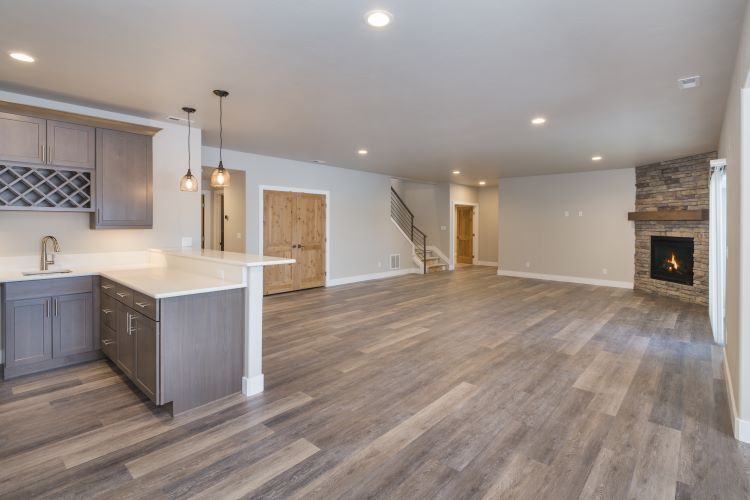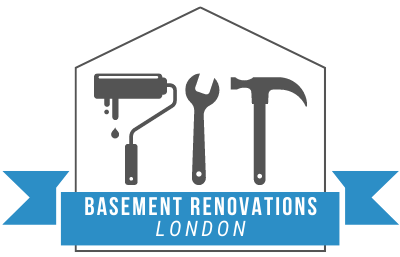Basement Renovation Trends for the Modern Home

At Basement Renovations London, we understand that a basement renovation is more than an upgrade—it’s an opportunity to transform a space into something unique and functional for today’s lifestyle. Basements have come a long way from dark storage rooms to dynamic, multipurpose spaces. If you're considering a basement renovation for your London, Ontario home, here are some of the latest trends that can help you turn this often-overlooked area into one of the best parts of your house.
1. Open-Concept Design
Open-concept layouts aren’t just popular in kitchens and living rooms; they’re making their way into basements too. With fewer walls, open layouts make the basement feel bigger, brighter, and more inviting. The open-concept approach is ideal for creating a versatile space where different activities can flow together seamlessly, from family lounging to entertaining guests.
2. Multipurpose Spaces
Modern homeowners are opting for flexible, multipurpose basements. This trend allows your basement to serve several functions at once. You might combine a home gym with a workspace or have a family entertainment area that includes a small bar and reading nook. Custom cabinetry and movable dividers can create sections without walls, keeping things flexible and adaptable as your needs change.
3. Home Theater and Entertainment Zones
Transforming basements into home theaters or dedicated entertainment spaces remains a favorite trend. Basements are perfect for this purpose since they naturally offer a quiet, insulated environment ideal for watching movies, gaming, or hosting game nights. Popular features include surround sound systems, built-in projector screens, and soundproofing, which create an immersive experience for family and friends.
4. Natural Light Emphasis
Basements aren’t traditionally known for natural light, but this is changing as homeowners invest in ways to brighten their spaces. Large egress windows not only let in natural light but also add an element of safety and style. Adding light-colored finishes, glass doors, and strategically placed mirrors can make the room feel larger and more welcoming, creating a space where natural light works to your advantage.
5. Home Office Space
With remote work becoming a permanent option for many, dedicated home office spaces in basements are on the rise. Basements offer the quiet and privacy ideal for focused work, away from the main living areas. Custom desks, built-in shelves, and ergonomic chairs can turn your basement into a productivity hub, with added soundproofing to ensure a professional environment.
6. Spa-Like Bathrooms and Wellness Spaces
Another emerging trend is transforming basements into wellness retreats. Adding spa-like bathrooms, yoga studios, or meditation spaces offers a retreat right in the comfort of your home. Features like heated floors, stone walls, steam showers, and ambient lighting can make this space feel as luxurious as any high-end spa.
7. Wet Bars and Mini-Kitchens
Having a wet bar or mini-kitchen in the basement adds convenience, especially if you’re planning on using the space for entertaining. From wine fridges and kegerators to coffee stations, these compact setups save trips upstairs and allow for better hosting. Minimalist designs with modern fixtures, open shelving, and island counters have become increasingly popular for a sleek, functional look.
8. Sustainable and Eco-Friendly Upgrades
Sustainability is a priority in home renovations, and basements are no exception. Using sustainable materials, energy-efficient lighting, and eco-friendly insulation are all popular choices. For flooring, many homeowners are choosing bamboo, cork, or engineered wood. Low-VOC paints and recycled materials are also preferred for a more environmentally-friendly space.
9. Built-In Storage Solutions
Instead of letting basements become cluttered catch-all spaces, modern renovations are focusing on integrated storage solutions that keep things organized and out of sight. Built-in shelving, hidden closets, and storage benches maximize space without compromising the aesthetic.
10. Indoor Garden Spaces
For plant lovers, adding an indoor garden area to the basement is an exciting trend that breathes life into the room. Choose low-light plants, add grow lights if needed, and consider vertical or hanging garden designs. Indoor plants improve air quality, add vibrancy, and create a relaxing, natural vibe that’s perfect for any modern home.
Make Your Basement a Showstopper with Basement Renovations London
Basement renovation is an investment that adds not only to the enjoyment of your home but also to its value. By focusing on trends that blend functionality with style, you can create a basement that meets your current needs and adapts to future changes.
At Basement Renovations London, our team specializes in transforming basements into spaces that work for your family and reflect modern aesthetics. Contact us today to explore how we can help bring these trends to life in your home!
You might also like




